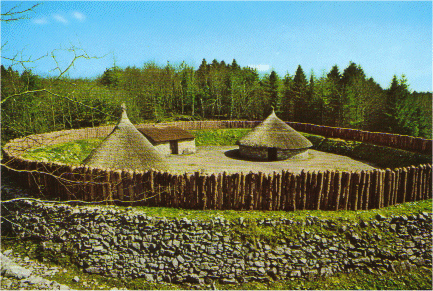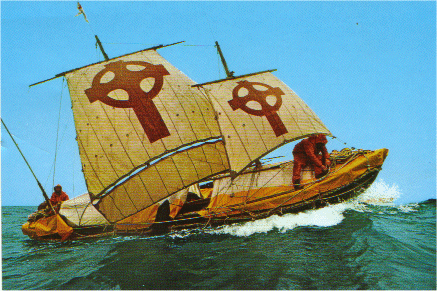|
|
|
Craggaunowen
by Cian 6th Class

In 1999 we went on our school tour to Craggaunowen in Co. Clare. At Craggaunowen there are Crannógs , ring forts and Tim Severin's replica of St. Brendan's boat . The archaeologists that reconstructed the crannóg at Craggaunowen used the same methods and materials as those used by our celtic ancestors.

The crannóg is reached from the shore by a wooden bridge. It is surrounded by a post and wattle fence with a watch tower over the entrance bridge. Inside there is a circular hut with a cone shaped roof, a longer rectangular hut and a small cooking hut.

The roofs are thatched with straw. From my visit there I really got a good insight into what crannógs looked like and what life was like back then.

Legend has it that a monk called St. Brendan set off in a small boat (Currach) and after a long time discovered America, nearly a 1000 years before Columbus. Many people believed no one could cross the Atlantic in such a tiny boat.

In 1976 a man called Tim Severin after reading the story thought that he could do it too. So he nade a boat like St. Brendan's out of wood and skin. He and four companions went from Brandon Creek in Co. Kerry to the Hebrides off Scotland, to the Faroe Islands to Iceland and they finally landed in New Foundland on the east coast of Canada. Tim Severin proved that you could cross the Atlantic in a tiny boat. The boat Tim Severin made can now be seen in Craggaunowen in Co. Clare.